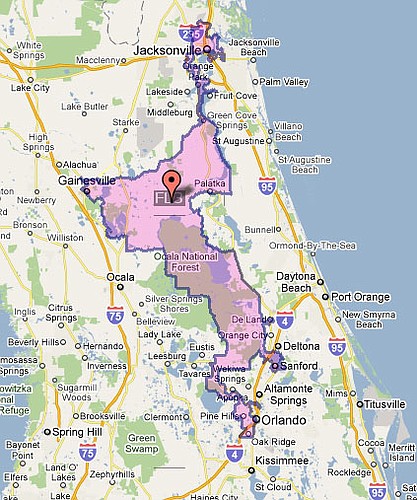- April 19, 2024
-
-
Loading

Loading

As the November mid-term elections loom closer, the debate over the amendments on the ballot heat up.
Amendments 5 and 6 are causing a stir over how the entire state will be represented in the future. If passed, Amendment 5 would set standards for the drawing, or redrawing, of legislative districts, and Amendment 6 would set the same standards for congressional districts.
The amendments have sparked two active campaigns: those supporting this new “fair districting” method and others calling for Floridians to protect their vote and “nix 5 and 6.”
Amendments 5 and 6 call for standards in the redistricting process that would call for all districts to be contiguous, compact, and where feasible, equal in population and making use of existing city, county and geographical boundaries. The amendments also state that no district can be drawn to deny minorities the equal opportunity to participate in the political process.
“I’m not going to tell you this is going to make everything perfect, but it’s going to help,” Nancy C. Jacobson, an elected member of the Democratic National Committee, said.
Jacobson, a vocal supporter of the amendments, said that passing 5 and 6 would be a step in the right direction toward ending the gerrymandering — legislators drawing districts to benefit their political party — process in Florida.
The support for her position, she says, is in the current map of Florida’s congressional and legislative districts.
“Look at the map and see if it makes sense to you,” she challenges citizens.
Charley Williams, the president of the League of Women Voters in Orange County, also uses the maps as a defense, pointing out congressional district 3, headed by U.S. Rep. Corrine Brown. It stretches from Jacksonville, over to Gainesville and down to parts of Orlando.
“What do these people living in Jacksonville have in common with us living in Orlando?” he asked.
They both hope that the passing of these amendments would lead to “fairer” redistricting come 2011.
Others, however, do not see the passing of amendments 5 and 6 as the best way to go about handling Florida’s districting issues.
“The amendments both have some good and some bad, but the question is do the good outweigh the bad?” Florida District 22 Senator David Simmons said.
He’s not so sure. Simmons is wary that the language in the amendments weigh more heavily toward the bad. He cites that when the amendment states that districts cannot be drawn “to diminish” the racial minorities ability to elect representatives of their choice, some districts could be frozen the way they are.
Like Williams, Simmons cited congressional district 3 as an example. This district, he said, has significant minority citizenship. If the amendment passes, he fears that this district could be frozen in its current state because, as stated in the amendments, racial and language minorities cannot have any less ability to elect the representative of their choice.
That means, he argues, that if the amendments are passed, district 3 could not be redrawn with any less minority representation than it has right now. This, he says, invalidates the intention of the amendments.
“There is a strong argument that this is the way it’s going to be interpreted, and that initiates the question of why we’re doing this,” Simmons said.
Simmons also states that using geographical boundaries, as the amendments suggest is not necessarily logical. He offers instead that lines should be drawn if anything by community relationship boundaries.
“What is the use of using boundaries like the Orange/Seminole county line? That doesn’t have a whole lot of meaning for anyone and has been in place for over 100 years,” he said.
Supporters on each side may not agree on the amendments themselves, but they both agree on one thing, citizens need to inform themselves by reading the amendments before forming an opinion. And most importantly, they need to get out to the polls on Nov. 2 and vote.
For more information, visit the Collins Center for Public Policy at www.collinscenter.org/page/FL_Amend_Home.